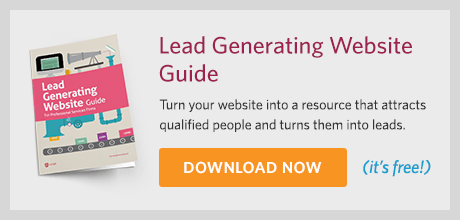Are you, or your marketing department, still using an Excel spreadsheet to track what communications have been sent to which clients? Yes? Then it may be time for an upgrade to a marketing automation platform, or MAP.
As the name implies, marketing automation platforms automate several marketing tasks and workflows to better engage and convert key buyers of your services. They also can be used to measure the effectiveness of different tasks to give you a better sense of what works, what doesn’t, and why.
This technology works across multiple marketing channels, including your website, social media networks, direct mail, and other offline channels. As a comprehensive marketing solution, it also helps identify, track and nurture key leads and measure your marketing return on investment (ROI).
That’s the how. Let’s explore the why.
Hyper-Personalization
Many equate automation with the impersonal. But automated marketing solutions are highly effective at hyper-personalization.
With MAPs, you can create personalized emails that go beyond the lead’s name in the greeting. According to Chadwick Martin Bailey, a full 56% of people will unsubscribe from emails because the content is no longer relevant. To combat this, you need to send information germane to individual prospects. Of course, you need to keep up with what you know about each lead, and what you know will likely change over time. Marketing automation manages this information so that you sent only the information of interest to a lead or client. You remain visible to leads without wasting your time, seeming pushy, or becoming irrelevant.
Take, for example, Prospect A. You first make contact with Prospect A when he subscribes to your email newsletter. After a month of receiving emails, he registers for—and attends—a webinar, “How to Build the Perfect Professional Services Website,” that was promoted in your email. The logical follow-up to the webinar is an email with a link to a related guide, such as “Lead Generating Website Guide.” You set up the MAP to send out that guide within a day or week of the webinar. All of these interactions pull Prospect A deeper into the funnel. At some point your business development team takes over, and the engagements go offline.
The automation platform creates each of these multiple customer touch points that build over time and evolve with the prospect. The automation gives your firm the opportunity to stay visible by sending the right message to the right person at the right time.
Segmentation
The key to getting the right message to the right person is segmentation. You want to segment your list as much as possible and tailor the journey from there. With automated marketing solutions, you can segment nearly any data point, including location, job title, job responsibilities, business revenue, status (lead, prospect, RFP/proposal, active client, past client), or the last time on your website.
Depending on the platform, segmentation can be highly dynamic, adjusting (adding or subtracting people) for a series of data or conditions. There are several benefits to dynamic segmentation.
1. Keep messages relevant to a particular lead based on where they are within your sales funnel.
2. Remove a person from a business development list once they have become a client.
3. Send offers based on several different characteristics (e.g., location, revenue, or industry)
For example, if you’re presenting at a conference in New York, you can email a personalized invite to leads within 100 miles. With segmentation, you will not bother a prospect in California with a useless invite. This is why sending relevant content is so compelling. In fact, relevant emails delivered through marketing automation drive far more revenue than generic email blasts!
If done manually, such dynamic segmentation would be overly time consuming and prone to error. A well-designed MAP lets you set it and forget it.
SEE ALSO: Expert Interview: Using Behavioral Psychology to Enhance Marketing Automation
Maximizing Content
Many marketers create amazing guides, webinars, infographics, and other content. Unfortunately, they promote each piece of content once and move on to the next piece. It is better to use that content sequentially based on behaviors and segmentation. With these sequences, you will casually move a lead through your pipeline, from cold lead to hot prospect, giving them more detailed and sophisticated education. If they don’t respond to something in the sequence, resend that item. (They won’t know you’re resending it.)
The relationship with your firm’s content is vital because clients are doing more due diligence online. We know that 80.8% of referrals look at your website. This is a great opportunity to start their relationship with your firm through great content, powered and distributed through automated marketing solutions.
Identifying Hot Prospects
Imagine knowing which of the 5,000 leads in your CRM are hot and which have become cold. With MAPs, you can rank each lead by lead scoring—a point system used to calculate the value of a prospect based on behaviors and qualifications.
For example, a person that attends a webinar gets more points than a contact that registers but doesn’t attend. Lead scores can also decay over time if a contact does not stay engaged.
The goal when using marketing automation is to not hand off a prospect to the business development team until they become a hot prospect and is ready to talk. At this point, the prospect has a relationship with the firm (and in some cases, your experts). With content and marketing automation, your business developers can usually close deals faster because they do not need to explain your firm’s offerings and the prospective clients see the value in your firm.
Cost and Requirements
Before starting, you want to make sure you have buy-in from your firm, a website that captures leads, and a CRM or prospect list. You’ll have a leg up if your firm already started developing content, however, some firms create content and start utilizing automated marketing solutions in tandem.
Marketing automation platforms are typically cloud-based, software as a service (SaaS) subscriptions. Each offers different automation and analytic tools, but many are bundled into automation suites. Don’t be intimidated by expensive automation platforms. Although there are systems that cost thousands of dollars a month, you can get started with leaner systems, like Drip & Automizy, for just $50. The key to success with these elementary options is to stay client-focused and don’t go on autopilot.
- For more hands-on help on becoming the next Visible Firm®, register for our Visible Firm® course through Hinge University.
- Check out our webinar, How Content Marketing Drives Prospects Through Your Sales Funnel, to learn how to create powerful content for your firm.
How Hinge Can Help:
Your B2B website should be one of your firm’s greatest assets. Our High Performance Website Program helps firms drive online engagement and leads through valuable content. Hinge can create the right website strategy and design to take your firm to the next level.


